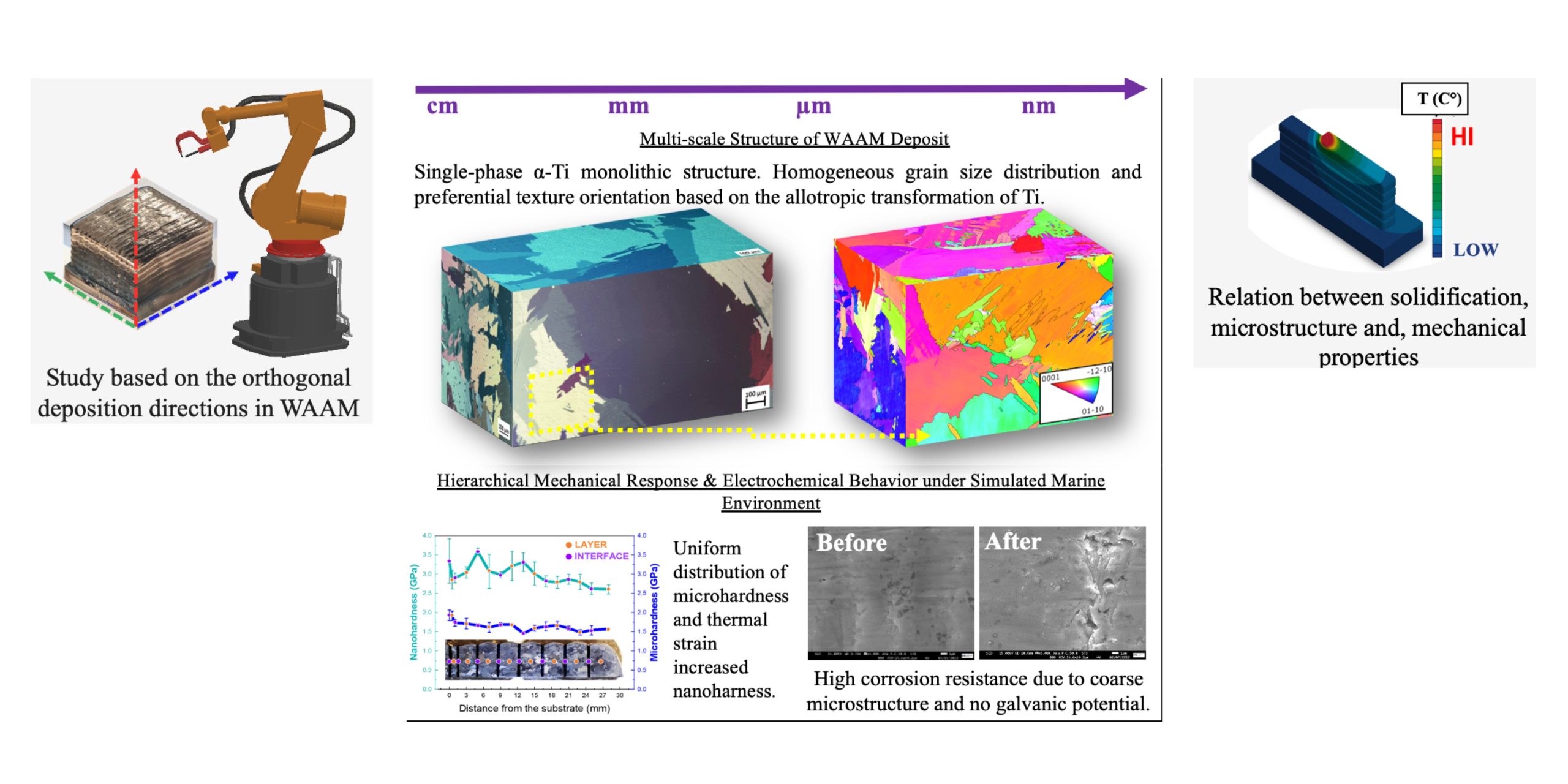Wire-Arc Direct Energy Deposition Laboratory
The Wire arc direct energy deposition (WA-DED) Lab is an advanced additive manufacturing and welding technique that involves the precise deposition of material through a controlled electric arc. In this process, a metallic wire is fed continuously into the welding arc, where it is melted and deposited onto a substrate to build up layers and create three-dimensional structures. WA-DED offers several advantages, including high deposition rates, excellent material efficiency, and the ability to work with a variety of materials, including metals and alloys. The process is highly customizable, allowing for the creation of complex geometries with reduced material waste. Additionally, WA-DED is often used for repair and cladding applications, enabling the restoration of worn or damaged components by adding material precisely where needed. This technology finds applications in industries such as aerospace, automotive, and energy, where the ability to produce complex, high-quality components with minimal waste is crucial. The versatility and efficiency of wire arc direct energy deposition make it a valuable tool in the realm of advanced manufacturing and repair processes
Tools
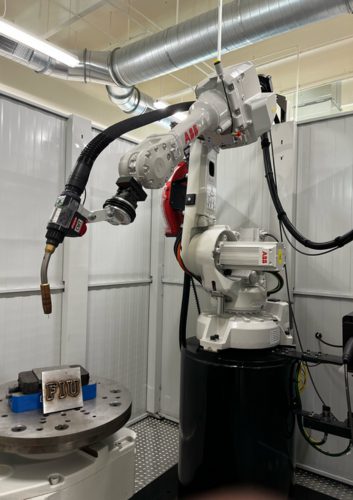
ABB Six Axis Robotic Arm
ABB Six Axis Robotic Arm
The core of the system, the robotic arm, consists of six axes of movement (six rotational axes). The multiple axes provide the flexibility to manipulate the wire arc welding toolhead with precision in multiple directions and orientations. With six axes of movement, the robotic arm can adjust its position and orientation dynamically during the additive manufacturing process. This flexibility enables the deposition toolhead to maintain an optimal angle relative to the workpiece surface, minimizing the need for overhangs and supports.
MIG/CMT Welding attachment for Robotic Arm
This attachment is among the many that the WAAM system can utilize, employing MIG, which stands for Metal Inert Gas welding. This technique is chosen for its capability to achieve high deposition rates, enabling the rapid printing of parts within shorter timeframes. Moreover, the fully automatic nature of the MIG welding system enhances usability, particularly when integrated with robotic systems. Furthermore, it offers versatility by accommodating various metals, including carbon steel, stainless steel, aluminum, and other non-ferrous metals. Additionally, the system is also able to employ cold metal transfer welding. It operates at lower temperatures than traditional wielding methods. This helps reduce the build up of heat during the part printing process.
TIG Welding attachment for Robotic Arm
TIG welding is another wielding system compatible with the WAAM system for printing new parts. This welding process is known for its exceptional precision in controlling the welding arc, which improves weld line geometry. Additionally, the system has the capability to weld with exotic materials such as alloys, enabling the exploration of experimental printing with materials tailored for specific purposes. For instance, it can be utilized in printing nozzle cones for rocket boosters made from high-temperature-resistant materials.
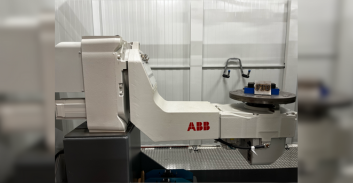
ABB Two Axis Workstation
The dual-axis workstation serves as a vital asset for printing objects with intricate geometries, particularly those featuring overhangs or necessitating support structures during the printing process. Its table boasts the capability to pivot the plate holding the object in a circular motion, enabling the robotic arm to maintain a fixed position while handling circular components. Additionally, the workstation’s arm can rotate, ensuring that the plane requiring printing aligns perpendicular to the welding nozzle of the robot. This collaborative functionality effectively addresses the challenges posed by overhangs and the necessity for support structures during printing.
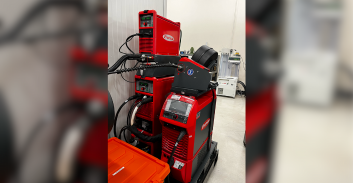
Fronius Welding System
The welding power source plays a pivotal role in wire arc additive manufacturing (WAAM) by supplying the necessary electrical energy to initiate and maintain the welding arc. Its precise control over welding parameters like voltage, current, and polarity ensures the attainment of optimal weld bead geometry and part quality. Advanced functionalities such as pulse welding capabilities, waveform control, and user-friendly digital interfaces facilitate convenient monitoring and adjustment. Moreover, the system offers versatility by accommodating various feed wires, including aluminum, steel, and other materials.
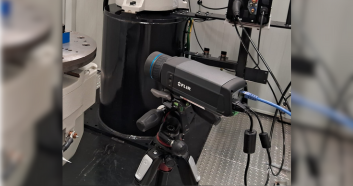
Thermal Camera
The thermal camera serves as a crucial tool in understanding and optimizing Wire Arc Additive Manufacturing (WAAM) processes. Its primary function is to capture infrared radiation emitted during the exothermic reactions inherent in WAAM. By translating this radiation into thermal images, researchers can visualize the distribution of heat throughout the printing process
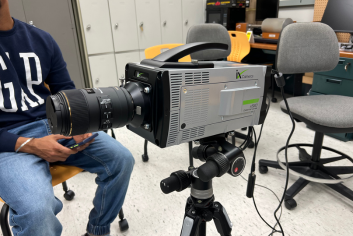
High Speed Camera
The high-speed camera is a specialized tool in Wire Arc Additive Manufacturing (WAAM) research. This recording device is designed to capture videos at frame rates surpassing tens of thousands per second or even hundreds of thousands. Which is crucial for the intricate analysis of WAAM processes. By slowing down the recorded videos, researchers can meticulously examine each millisecond of the printing procedure, unraveling the dynamics at play. Additionally, the integration of a microscopic lens extends the camera’s functionality, enabling recordings at remarkable levels of magnification. This heightened magnification proves invaluable in WAAM research, allowing scientists to delve into the fluid dynamics of liquid metal deposition with unprecedented clarity and detail.
Ongoing Research Projects
Role of Structural Hierarchy on Mechanics and Electrochemistry of Wire Arc Additive Manufactured (WAAM) Single Phase Titanium
Our ongoing research aims to understand the correlations between structure, mechanics, and electrochemical behavior in single-phase additive-manufactured titanium components, crucial for large-scale processing. This study systematically investigates the evolution of structural hierarchy and its impact on hardness and corrosion resistance in wire-arc direct energy deposited (WDED) commercially pure titanium (cp-Ti) along three deposition directions. Integrated X-ray diffraction and optical microscopy reveal a single-phase α-Ti monolithic structure with traces of titanium oxide but no observable deposition tracks or interfaces. The single-phase structure yields uniform microhardness distribution, averaging 1.6 GPa along the build direction and bulk, about 80% of conventionally cast cp-Ti. Increased dislocation density and thermal strain during WDED enhance nanohardness to 3.0 GPa. High corrosion resistance, with a rate of 80 x 10-5 mm per year, is attributed to the absence of galvanic potential difference between adjacent grains and coarse grain size. Overall, this study advances single-phase WDED processing as a potential large-scale additive manufacturing alternative to conventionally processed Ti components.
